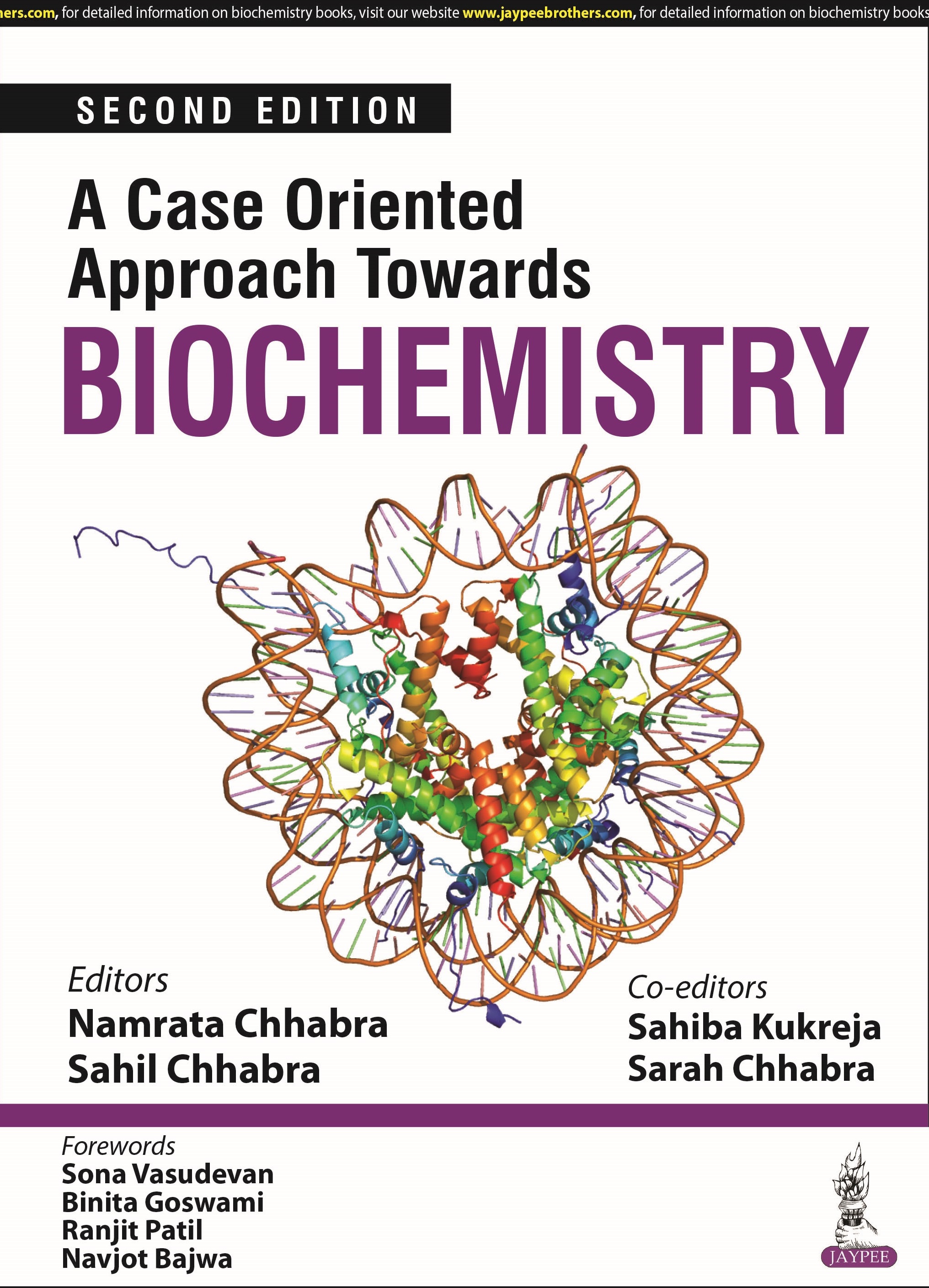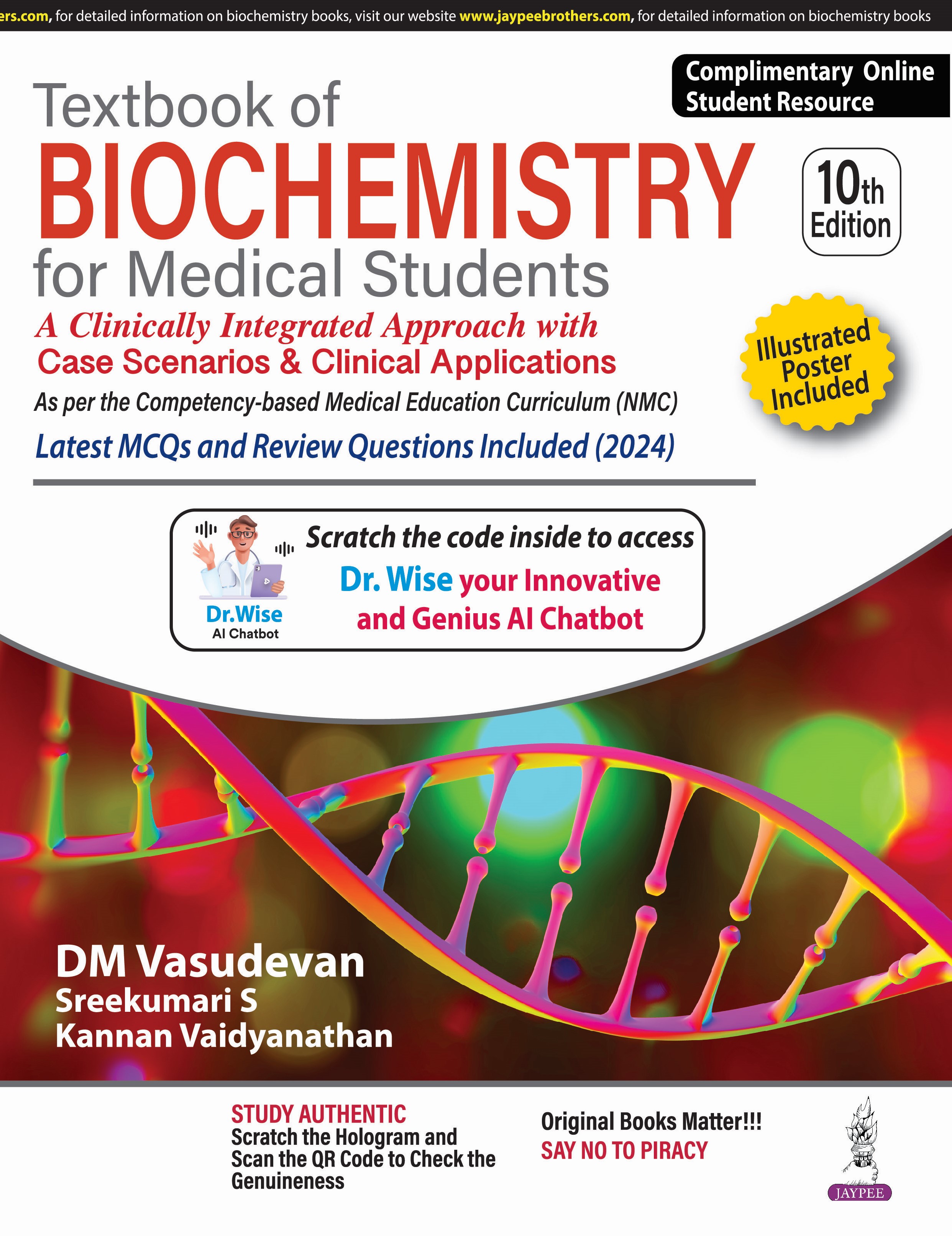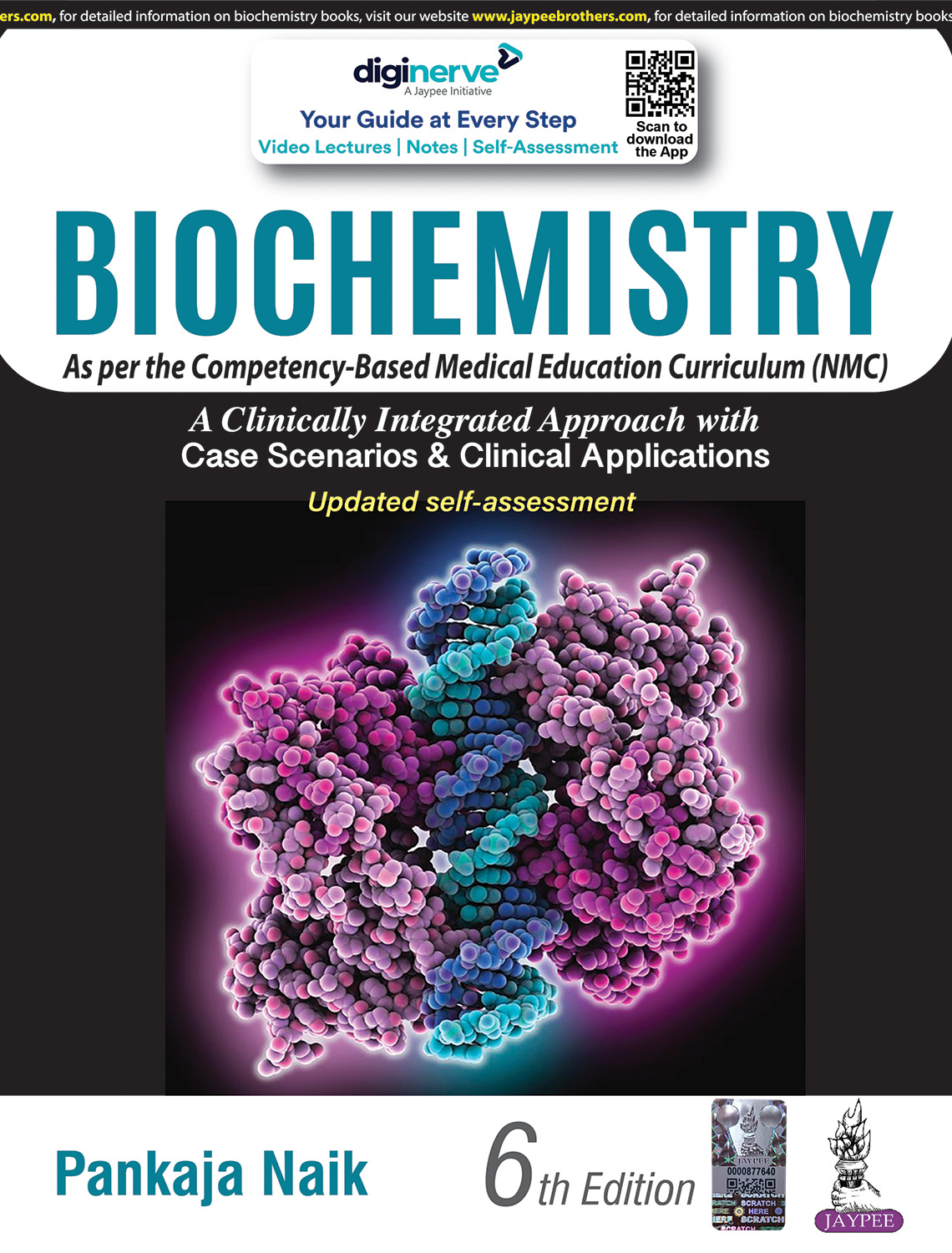Under Graduate | BIOCHEMISTRY | 9789390595792

A CASE ORIENTED APPROACH TOWARDS BIOCHEMISTRY
NAMRATA CHHABRA
ISBN: 9789390595792 | 2023 | 2/E R.P.
Key Features
The revised edition contains illustrations of three hundred clinical cases. Each case has been carefully designed and described with a logical coverage of the fundamental aspects of biochemistry and the clinical implications of the underlying biochemical deviations., The original format of the description of clinical cases has been maintained in the revised edition. In each case, illustrations of the basic defect, the underlying pathophysiology, and the clinically relevant details have been provided. Each case study ends-up in a ÔøΩclinical noteÔøΩ and a summary in the form of essential points, titled as ÔøΩclinical pearls.ÔøΩ, The course contents have been spread out in twenty-nine chapters. Each chapter starts with a list of ÔøΩlearning objectives.ÔøΩ The case descriptions relate to the learning objectives. Each case study has been assigned a ÔøΩthemeÔøΩ based on the contextual details, and three clinically relevant ÔøΩiconsÔøΩ for the depiction of theme, clinical note, and clinical pearls., Three new chapters have been added including the details of biochemical and molecular techniques, case-based multiple-choice questions, and quick revisions of significant biochemical deviations. Newborn screening due to its diagnostic and prognostic significance, and some topics of clinical concerns, such as heavy metal toxicity, tumor markers, mechanisms of enzyme action, and enzymes inhibition have also been included. Some redundant cases have been removed to reduce content load, and some have been updated to include the latest information and pictorial representations. Thirty-seven diagrams, tables, flowcharts, and nine new cases have been added to provide broad and conceptual coverage of the course contents.
...
Read More...
-
Paper Back
Price
USD $ 115 GBP £ 96



